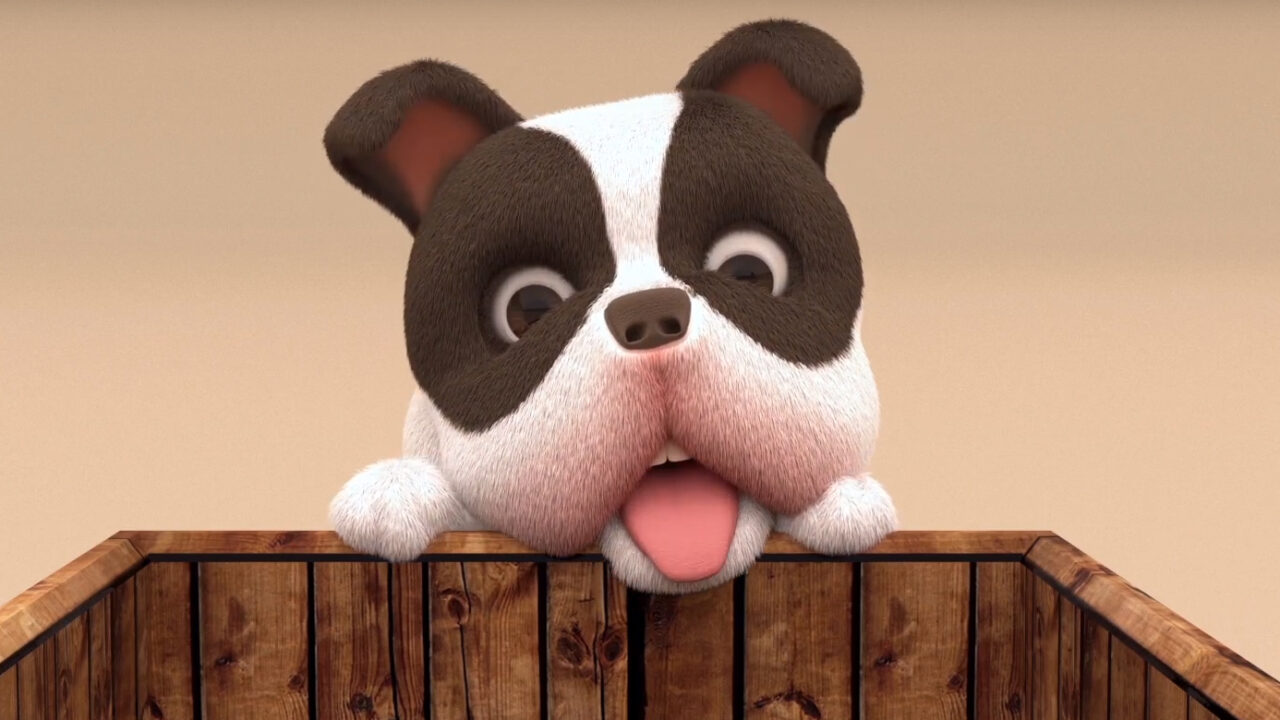Animation MA

Our Mission
Our 36-credit Master of Arts degree in Animation offers three concentrations (3D Character Animation, Visual Effects, Video Games) that center around gaining hands-on skills in the chosen concentration. This major is designed for students who possess an undergraduate degree from an accredited university, college, or art school who are looking to further sharpen their skills and increase their understanding of the discipline. It accepts recent undergraduates, master’s level transfer students, and working professionals who want to grow their animation skills.
Get More Information
About the Degree
All of the courses in this program are offered in a hybrid format, which allows students to decide if they would like to attend classes in-residence, remotely online, or a combination of the two. If you live locally, some weeks you may want to be in our state-of-the-art Animation Lab with the Professor while other weeks you may opt to join remotely to work around personal or family obligations. Whether you live near or across the globe, you can be in our Animation Master’s program and attend your classes in whichever way works best for you.
Special Admissions Instructions
MA in Animation degree applicants must digitally submit a portfolio of 10-15 creative pieces as part of the application process. Acceptance is based on the quality of the work as well as meeting all of the other academic admission requirements of the university. The review committee is looking for work that is original in concept and content and will evaluate the portfolios to determine if the applicant qualifies to enter the program based on their artistic skills. If the submitted work infringes on copyright laws or is copied from other sources the applicant will be denied admission.
F-1 visa holders must attend all courses in-residence on a full-time basis.
Flexible Degree Paths
New enrollees can apply to begin in the Fall or Spring semester. Full-time students can complete this program in 1.5-2 years. Part-time students may take courses over multiple years until the required 36 credits are completed.
Our Degrees
Each degree and concentration offers an opportunity to develop skills that will help you pursue your artistic and professional goals.
Student Learning Objectives
Students in the Animation Majors will be able to:
- Develop and compose written conceptual materials effectively.
- Convey information and ideas through visual imagery proficiently.
- Engage actively in verbal critiques and discussions.
- Create high-quality 2D and 3D character animations.
Industrial Application of Skills and Competencies
Graduates of the program will be prepared to:
- Utilize the principles of animation language as applied in the video game industry.
- Write detailed character biographies, video game design proposals, treatments, and storylines effectively.
- Apply animation knowledge specifically to the context of the video game industry.
- Present animation and video game concepts, principles, and practices clearly in oral presentations.
Potential Career Paths*
The animation and video game industry is experiencing higher than average growth between 8% and 16% annually.
- Animators
- Special Effects Artists
- Video Game Designers
- Web Developer
- Digital Designer
*Statistics and information compiled by the United States Bureau of Labor Statistics
Upon entry, students select one of these concentrations to be their area of focus:
3D Character Animation Concentration
Required Courses (18 Credits)
- ANIM 5300 Storytelling
- ANIM 5400 Character Design
- ANIM 6100 Digital Sculpting
- ANIM 6150 3D Character Texturing
- ANIM 6300 3D Character Animation
- ANIM 7000 Advanced 3D Character Animation
Major Electives (18 Credits)
Visual Effects Concentration
Required Courses (18 Credits)
- ANIM 5300 Storytelling
- ANIM 5500 Digital 2D Animation
- ANIM 5600 3D Layers in After Effects
- ANIM 5700 Dynamic Effects and Particle Systems in After Effects
- ANIM 5800 Compositing in After Effects
- ANIM 6350 3D Particle Systems and Effects
Major Electives (18 Credits)
Video Games Concentration
Required Courses (18 Credits)
- ANIM 5400 Character Design
- ANIM 5500 Digital 2D Animation
- ANIM 6100 Digital Sculpting
- ANIM 6400 3D Animation for Games
- ANIM 6600 Game Creation
- ANIM 7500 Advanced Game Creation
Major Electives (18 Credits)
Other Animation Electives
- ANIM 5650 3D Modeling
- ANIM 5750 3D Character Modeling
- ANIM 5850 Advanced Digital 2D Animation
- ANIM 6805 Motion Tracking
- ANIM 6900 Digital 2D Game Creation
- ANIM 7550 Internship I
- ANIM 7600 Video Game Team Project
- ANIM 7700 Faculty/Student Research I
- ANIM 7775 Internship II
- ANIM 7805 Faculty/Student Research II
- ANIM 7900 Animation Career Preparation
Requirements for Graduate Admissions
No Standardized Testing is Required
- Completed FDU graduate admissions application
- Official undergraduate and graduate transcripts from all colleges and universities attended
- Two letters of recommendation (from a professor, employer, or professional in the field familiar with the student’s strengths and abilities)
- Bachelor’s degree from an accredited college or university with a minimum cumulative grade point ratio (CGPR) of 2.70 (applicants with a CGPR of less than 2.70 may be admitted on probation)
- Digital portfolio
- Personal statement
- Resume